Juvenile Coho Salmon Observed Above Former Dam Site on Cedar Creek, Tributary to South Fork Eel River
Located in northern Mendocino County, Cedar Creek is an important cold-water tributary to the South Fork Eel River. But since the late 1940s a dam had been in place to supply water to a now defunct fish hatchery. The Cedar Creek hatchery dam, only a few hundred feet from the South Fork Eel River, impeded fish access to most of the creek’s prime habitat. In 2022, CalTrout and our partners removed this dam on Cedar Creek, increasing access to approximately nine miles of high-quality habitat previously inaccessible to juvenile salmon and steelhead. In an exciting development, CalTrout staff observed juvenile coho salmon in Cedar Creek above the former dam site.
In August 2023, CalTrout staff conducted a snorkel survey of Cedar Creek from its confluence with the South Fork Eel River, through the former dam site, and up to the Highway 101 crossing. During this survey, 34 juvenile coho salmon were observed, many of which were upstream of the former dam site. Juvenile steelhead and resident rainbow trout were also observed throughout the survey, both below and above the former dam site.
Previous surveys of Cedar Creek did not routinely detect coho salmon adults or juveniles, and none had been observed in the past 15 years. Although we cannot rule out the possibility that coho had been present during recent surveys, there would have been so few as to not be detectable.

The origin of the juvenile coho salmon could not be confirmed as coming from adult coho salmon spawning in Cedar Creek or as non-natal juvenile coho salmon from elsewhere in the South Fork Eel River. While presence of coho salmon juveniles cannot be directly attributable to removal of the barrier, it is highly likely that the increased opportunity for fish passage allowed better access for adult coho salmon if the observed juveniles originated from within the Cedar Creek watershed. If the juvenile coho salmon were using Cedar Creek for non-natal rearing, then access to habitat above the dam would not have been possible if the dam were still present. Thus, dam removal certainly succeeded in providing additional cold-water refugia and rearing habitat to coho salmon in the South Fork Eel River.
This type of habitat is becoming increasingly critical for young steelhead and salmon as climate change impacts waterways, increasing water temperatures to dangerously high temperatures. Special thanks goes to Rangjung Yeshe Gomde California for allowing this project on their land and allowing access for the survey.
Cover Photo: Juvenile coho salmon spotted in Cedar Creek






5 Comments
This is amazing. I grew up in Humboldt County and spent many, many boyhood days swimming and fishing in the Eel River. I’m so glad the Cedar Creek dam has been removed. This article makes me happy!
I spent quite a bit of time at the Hatchery before the floods of 64-65 floods and witness the Devastation afterwards………Good job. My father was the Game Warden there at the time and I fished that area a lot, I also walked much of that Creek for many miles upstream, lots of boulders and big pools then! Late 1950’s .
Bruce, do you have any old photos of the site or area?
Bruce, do you have any old photos of the site or area?
Good work.!!! Fish passage is a must…